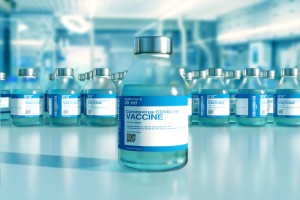
Moderna vaccine adds to the list of vaccines validated by WHO for emergency use
Ultra-cold chain equipment may not always be necessary to deploy the Moderna vaccine
Geneva: The World Health Organisation (WHO) today listed the Moderna COVID-19 vaccine (mRNA 1273) for emergency use, making it the fifth vaccine to receive emergency validation from WHO. The other vaccines listed by WHO for emergency use are the Pfizer/BioNTech, Astrazeneca-SK Bio, Serum Institute of India and Janssen vaccines for emergency use.
The US Food and Drug Administration issued an emergency use authorization for the Moderna vaccine on December 18, 2020 and a marketing authorisation valid throughout the European Union was granted by the European Medicines Agency on January 6, 2021.
WHO’s Emergency Use Listing (EUL) assesses the quality, safety and efficacy of COVID-19 vaccines and is a prerequisite for COVAX Facility vaccine supply. It also allows countries to expedite their own regulatory approval to import and administer COVID-19 vaccines.
The vaccine has already been reviewed by WHO’s Strategic Advisory Group of Experts on Immunization (SAGE), which makes recommendations for vaccines’ use in populations (i.e. recommended age groups, intervals between shots, advice for specific groups such as pregnant and lactating women). The SAGE recommended the vaccine for all age groups 18 and above in its interim recommendations dated January 25, 2021.
The WHO EUL process can be carried out quickly when vaccine developers submit the full data required by WHO in a timely manner. Once those data are submitted, WHO can rapidly assemble its evaluation team and regulators from around the world to assess the information and, when necessary, carry out inspections of manufacturing sites.
The Moderna vaccine is an mNRA-based vaccine. It was found by the SAGE to have an efficacy of efficacy of 94.1%, based on a median follow-up of two months. Although the vaccine is provided as a frozen suspension at –25 ºC to –15 ºC in a multidose vial, vials can be stored refrigerated at 2–8 °C for up to 30 days prior to withdrawal of the first dose, meaning that ultra-cold chain equipment may not always be necessary to deploy the vaccine.
WHO emergency use listing
The emergency use listing procedure assesses the suitability of novel health products during public health emergencies. The objective is to make medicines, vaccines and diagnostics available as rapidly as possible to address the emergency, while adhering to stringent criteria of safety, efficacy and quality. The assessment weighs the threat posed by the emergency as well as the benefit that would accrue from the use of the product against any potential risks.
The EUL pathway involves, the WHO said, a rigorous assessment of late phase II and phase III clinical trial data as well as substantial additional data on safety, efficacy, quality and a risk management plan. These data are reviewed by independent experts and WHO teams who consider the current body of evidence on the vaccine under consideration, the plans for monitoring its use, and plans for further studies.
As part of the EUL process, the company producing the vaccine must commit to continue to generate data to enable full licensure and WHO prequalification of the vaccine. The WHO pre-qualification process will assess additional clinical data generated from vaccine trials and deployment on a rolling basis to ensure the vaccine meets the necessary standards of quality, safety and efficacy for broader availability.
– global bihari bureau





